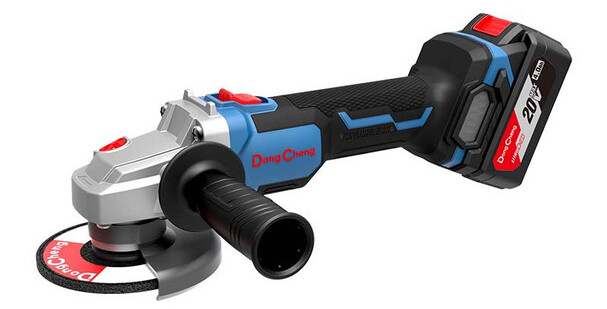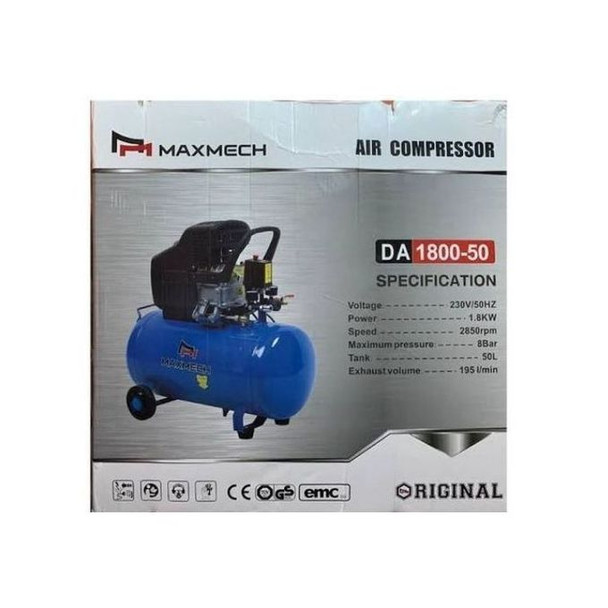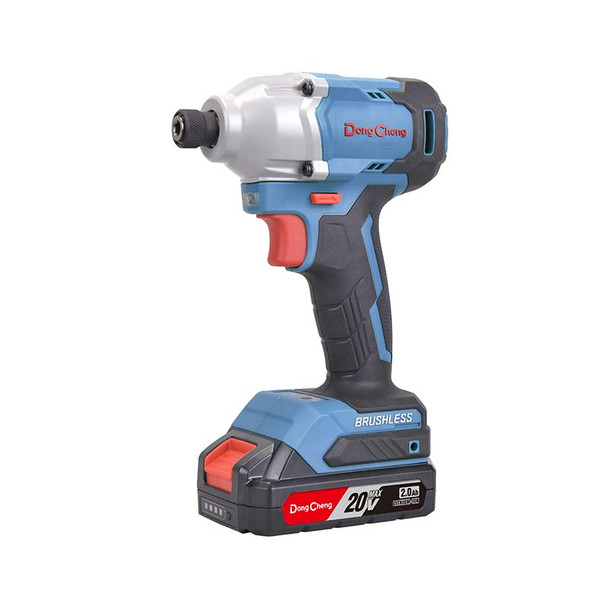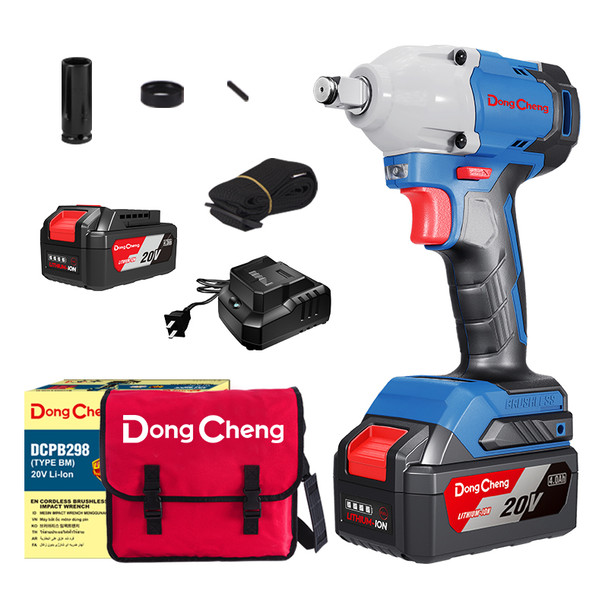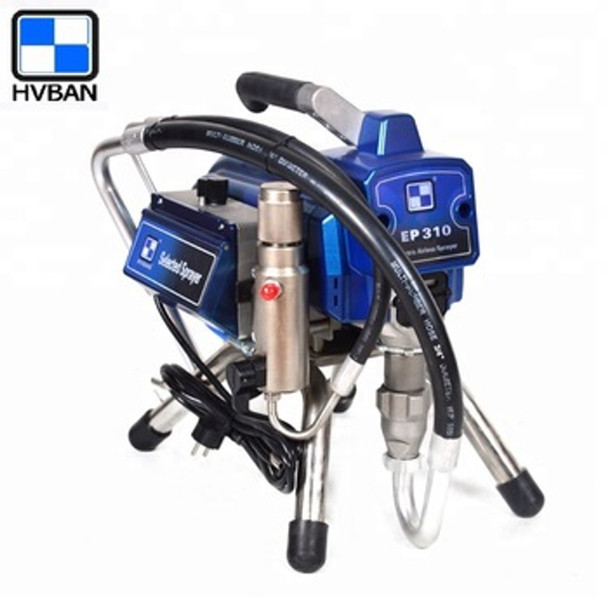Maximizing ROI: Investing in High-Quality Industrial Tools
Key takeaway:
Investing in high-quality industrial tools not only enhances productivity and efficiency but also ensures long-term cost savings and a significant return on investment. By prioritizing quality over initial costs, businesses can experience improved performance, reduced downtime, and enhanced safety standards, ultimately leading to increased profitability and sustainable growth.
DongCheng Cordless brushless angle grinder -DCSM03-100
Introduction
In today's competitive industrial landscape, the significance of investing in high-quality industrial tools enhances productivity to ensuring safety and reliability, the right industrial tools serve as indispensable assets for businesses across various sectors. In manufacturing, they streamline production processes and boost output while ensuring product quality. In construction, these tools facilitate timely project completion and mitigate risks, contributing to overall profitability. Similarly, in automotive repair and aerospace fabrication, precision tools enable accurate work and adherence to strict standards. In sectors like oil and gas, mining, and power generation, reliable tools minimize downtime, reduce maintenance costs, and ensure safe operations in challenging environments. Overall, investing in high-quality industrial tools translates into tangible benefits, driving operational excellence and maximizing returns across industries.
One way in which investing in high-quality industrial tools maximizes ROI is by reducing downtime and maintenance costs. High-quality tools are built to withstand rigorous industrial applications, resulting in fewer breakdowns and repairs. With reliable equipment, businesses can minimize unplanned downtime, ensuring continuous operation and production efficiency. Moreover, superior-quality tools often come with longer warranties and better support services, further reducing maintenance costs over the equipment's lifespan. By investing upfront in durable and reliable tools, businesses can significantly lower their total cost of ownership and achieve higher returns on their investment in the long term.
In this context, maximizing Return on Investment (ROI) through strategic tool investments emerges as a key objective for enterprises aiming to thrive in the long run. This introduction sets the stage for delving into the critical importance of prioritizing high-quality industrial tools and exploring how such investments can yield significant returns in terms of efficiency, performance, and overall business success.
You may also like: Maintaining Your Industrial Equipment: Tips and Best Practices
Maxmech Air Compressor Da 1800-50
Understanding the Impact of Industrial Tools on ROI
Investing in high-quality industrial tools can significantly impact the return on investment (ROI) for businesses in the manufacturing and construction sectors. Here’s how:
- Enhancing Efficiency and Productivity High-quality industrial tools are designed to operate more efficiently, which means they can complete tasks faster and with greater precision. This leads to a higher output in a shorter amount of time, effectively increasing productivity. For instance, using advanced cutting tools can reduce the time it takes to cut materials, while maintaining a high level of accuracy, thus speeding up the production line. By automating repetitive tasks and minimizing manual intervention, your workforce can focus on more intricate aspects of the production line, ultimately boosting overall output.
- Ensuring Product Quality and Consistency The use of premium tools contributes to the consistent quality of the products manufactured. Tools that are precise and reliable minimize the risk of defects, ensuring that each product meets the required standards. This consistency is crucial for maintaining brand reputation and customer satisfaction, which in turn, can lead to repeat business and referrals.
- Minimizing Downtime and Maintenance Costs Downtime can be a significant detriment to ROI, impacting both productivity and revenue. Durable industrial tools that are built to last not only reduce the frequency of replacements but also the downtime associated with maintenance and repairs. This reliability ensures that production schedules are not disrupted, which can be costly in terms of both time and money. Moreover, the reduced need for repairs translates to lower maintenance costs over the tool’s lifespan.
- Improving Workplace Safety and Reducing Risks Quality tools are often engineered with safety features that protect the users and reduce the likelihood of workplace accidents. This not only helps in safeguarding employees but also minimizes the potential financial losses associated with injuries, such as medical expenses, legal fees, and compensation. Additionally, a safe work environment can enhance employee morale and productivity.
In essence, the strategic investment in high-quality industrial tools can lead to substantial improvements in efficiency, product quality, cost savings, and safety, all of which contribute positively to a company’s ROI.
DongCheng Cordless brushless impact driver-DCPL03-14
Factors to Consider When Investing in Industrial Tools
When it comes to investing in industrial tools, several factors must be weighed to ensure that the investment will yield a favorable return on investment (ROI). Here are the key considerations:
1. Quality and Durability of the Tools
The quality and durability of industrial tools are paramount. High-quality tools made from superior materials may come with a higher upfront cost but can withstand rigorous use and last longer. This durability means fewer replacements and repairs, which can save money in the long run. This not only leads to cost savings but also contributes to enhanced overall efficiency.
2. Compatibility with Existing Systems and Workflows
Seamless integration is crucial when introducing new tools into an industrial setting. It’s essential to choose tools that integrate easily with existing systems and workflows. Tools that are compatible with current equipment and processes can be implemented more quickly and with less training, reducing the transition period and increasing productivity.
3. Long-term Reliability and Warranty
Reliability over time is a critical factor. Tools that are known for their long-term reliability require less frequent maintenance and are less likely to fail, ensuring continuous operation. Additionally, a solid warranty can provide peace of mind and protection against unforeseen defects or issues.
4. Total Cost of Ownership and Return on Investment
The total cost of ownership (TCO) includes the purchase price, operating costs, maintenance, and any potential downtime costs. When evaluating TCO, it’s crucial to consider how the investment in tools will improve ROI. Tools that enhance efficiency, reduce waste, and improve product quality can significantly impact the bottom line. Choose tools that offer a favorable balance between upfront costs and long-term savings, ensuring that the investment pays off over time.
Airless Sprayer MARK V Type HVBAN EP450ITX
Best Practices for Maximizing ROI with Industrial Tools
Maximizing the return on investment (ROI) from industrial tools involves a combination of regular upkeep, employee empowerment, strategic procurement, and ongoing performance assessment. Here’s how to approach each:
Regular Maintenance and Calibration
Consistent maintenance and calibration are crucial for ensuring that industrial tools function at peak performance. This practice not only extends the life of the tools but also guarantees that they operate within the required specifications, which is essential for quality control. Scheduled maintenance prevents unexpected breakdowns, which can cause costly production delays. Also, calibration, in particular, is vital for accuracy in measurements and precision. Incorporating these practices minimizes downtime, extends the lifespan of the tools, and ultimately enhances ROI.
Training and Skill Development for Employees
Investing in high-quality industrial tools is only half the battle; the other crucial component is ensuring that your workforce is proficient in using them. Well-trained employees can work more efficiently, reduce the risk of errors, and contribute to a safer working environment. Continuous learning opportunities can also lead to innovative uses of the tools that enhance productivity, reduce the risk of accidents and also maximizes the potential of the tools, leading to increased productivity and ROI.
Strategic Planning for Tool Procurement and Replacement
Strategic planning for the procurement and replacement of tools can prevent hasty decisions that may not align with long-term ROI goals. Assess the lifespan of your current tools and strategically plan for their replacement before they become obsolete or less efficient. Additionally, staying informed about advancements in industrial technology helps you make proactive decisions, ensuring that your toolkit remains up-to-date and aligned with industry standards. This foresightedness contributes significantly to long-term ROI.
Continuous Monitoring and Evaluation of Tool Performance
Finally, continuous monitoring and evaluation of tool performance can provide insights into their efficiency and contribution to the company’s ROI. This involves regular assessments, data collection, and feedback loops. By staying vigilant to changes in performance metrics, you can address concerns promptly, preventing potential setbacks and ensuring that your tools consistently contribute to the overall efficiency and productivity of your operations.
DongCheng Cordless Brushless Impact Wrench 16 mm 20V 4A DCPB298BM
Calculating ROI for Industrial Tool Investments
Calculating the return on investment (ROI) for industrial tool investments is crucial for understanding their value to your business. Various methodologies exist for calculating ROI, each tailored to specific business needs and preferences.
The most common formula for ROI is:
ROI = {Net Gain on Investment /Cost of Investment} x 100
To apply this to industrial tools, you’ll need to calculate the net gain by subtracting the total cost of the investment from the total gains attributable to the investment. This includes increased revenue from enhanced productivity and savings from reduced downtime or maintenance costs. Other methodologies, such as the Payback Period and Net Present Value (NPV), offer additional insights into the financial performance of an industrial tool investment. Choosing the appropriate methodology depends on the specific goals and preferences of your organization.
Quantifying Benefits such as Increased Productivity and Reduced Downtime
While monetary gains are a crucial aspect of ROI calculations, it's equally essential to quantify non-monetary benefits. Increased productivity, for example, can be measured in terms of time saved or additional output achieved.
To quantify benefits:
- Measure the increase in output or efficiency after implementing the new tools.
- Calculate the cost savings from reduced downtime by comparing the frequency and duration of tool-related interruptions before and after the investment.
- Factor in savings from lower maintenance costs and longer tool lifespans.
Airless Sprayer HVBAN EP310
Case Studies
Manufacturing Sector: Enhancing Efficiency and Productivity
Flour Mills Nigeria, a key player in the country's food processing industry, invested in advanced milling machinery to streamline their production process. By adopting state-of-the-art industrial tools, they experienced a significant increase in production efficiency. The tools not only boosted output but also reduced energy consumption, leading to lower operational costs. The ROI was evident through a notable surge in production volume and improved profit margins, demonstrating the transformative impact of investing in high-quality industrial tools in the Nigerian manufacturing sector. Also, companies like Nigeria Distilleries Limited have leveraged inventory control to maximize profits. By implementing efficient inventory management techniques such as Economic Lot Size and Just-in-Time, they have managed to place orders at the right time and quantity, overcoming lead time setbacks and minimizing costs.
Construction Industry: Streamlining Workflows and Minimizing Downtime
Julius Berger, a renowned construction company in Nigeria, embraced cutting-edge construction equipment to enhance project timelines and minimize downtime. High-quality tools, including advanced earthmoving machinery and precision tools, allowed for quicker completion of projects. The reduced downtime translated to substantial cost savings and increased overall project efficiency. This case highlights how strategic investments in industrial tools can significantly impact ROI in the construction industry within the Nigerian context. The Nigerian construction industry has also seen improvements in ROI through the implementation of Total Quality Management (TQM). Studies have shown that adherence to TQM principles, such as ensuring procurement of materials of specified quality standards and maintaining quality supervision, has mitigated structural failure rates in construction projects.
Automotive Repair and Maintenance: Improving Service Quality
In the automotive sector, investments in diagnostic and repair tools have enabled faster and more accurate diagnostics, leading to a reduction in repair times and increased customer satisfaction. The improved efficiency has not only attracted more customers but also the tangible ROI was reflected in increased business and positive word-of-mouth referrals, showcasing the impact of investing in high-quality tools in the automotive repair and maintenance industry. In line with this, Mecho Autotech, a Nigerian startup, has raised significant capital to expand vehicle maintenance and repair services. By digitizing the process and connecting car owners with quality service providers, they have addressed the challenge of frequent vehicle breakdowns, thereby improving the ROI for vehicle owners through reliable and consistent service quality.
Oil and Gas Exploration: Ensuring Safety and Precision
In the oil and gas sector, investments have been made in state-of-the-art exploration and drilling equipment to ensure safety, precision, and efficiency in operations. These tools not only enhanced the accuracy of resource identification but also contributed to a safer working environment. By minimizing risks and optimizing exploration processes, Several companies experienced a positive impact on ROI through increased yields and reduced operational incidents. Models like the Hubbert curve have also been used to forecast production outlooks, which in turn inform investment decisions and potential ROI. For instance, studies on Nigeria’s crude oil production have used empirical models to describe and explain production patterns, aiding in strategic planning for sustainable economic growth powered by the oil and gas industry.
These case studies demonstrate that whether it’s through improved inventory management, quality control, service digitization, or strategic forecasting, the impact of high-quality industrial tools on ROI is profound and measurable.
Related Articles
Top 5 Power Tools Every Industrial Worker Should Have
Conclusion
The investment in high-quality industrial tools is not merely a purchase, it’s a strategic decision that can significantly influence a company’s operational efficiency and financial performance. Throughout this article, we’ve explored various facets of how such tools impact return on investment (ROI), from enhancing productivity and ensuring product quality to minimizing maintenance costs and improving safety.
Key Points To Remember:
- Efficiency and Productivity: Superior tools drive faster and more precise operations, boosting output.
- Quality and Consistency: Reliability in tools ensures consistent product standards, vital for customer satisfaction.
- Cost Savings: Durable tools with less downtime translate to lower long-term costs.
- Safety: Enhanced safety features protect employees and reduce financial risks associated with workplace accidents.
- Strategic Investment: Careful consideration of compatibility, reliability, and total cost of ownership is essential when selecting tools.
- Best Practices: Regular maintenance, employee training, strategic procurement, and performance monitoring are critical for maximizing ROI.
- Real-world Examples: Case studies from Nigeria’s manufacturing, construction, automotive, and oil sectors illustrate the tangible benefits of investing in quality tools.
Investing in high-quality industrial tools is an investment in the future of a business. It’s about optimizing long-term ROI, not just through immediate gains but by setting a foundation for sustained growth and competitiveness. As we’ve seen through various industry examples, the right tools can make a substantial difference in a company’s trajectory, particularly in dynamic markets like Nigeria. For businesses looking to thrive in today’s economy, the message is clear: prioritize quality, think strategically, and invest in high quality industrial tools that will deliver not just today, but for years to come. For more information or enquiries about getting high quality Industrial Tools, don't hesitate to Contact Us
Recent Posts
-
How to Choose the Right Industrial Cleaning Service Provider
Key takeawayThoroughly Assess Your Needs and Providers: Understand your specific industrial cle …Jul 26, 2024 -
Floor Paint Maintenance: How to Keep Your Floors Looking Their Best
Maintaining your painted floors is essential for preserving their beauty and extending their lifespa …Jul 25, 2024 -
The Best Floor Paint for Different Types of Flooring
When it comes to revitalizing your home's flooring, choosing the right paint can make all the d …Jul 19, 2024


